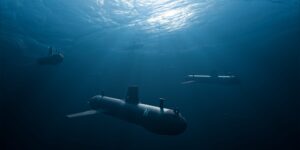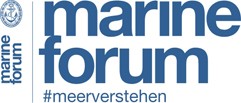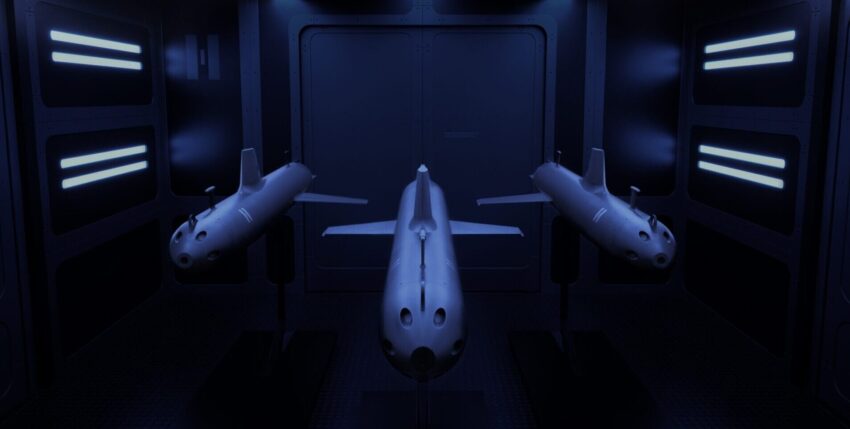New underwater glider from Helsing
On 13 May 2025, the Helsinga young software developer from Munich, at parallel events in Portsmouth and in Hamburg its underwater reconnaissance system SG-1 Fathom and the AI platform Lura. The events, one at the traditional Royal Navy base, the other at the newly opened maritime representative office of the defence technology company in the German Hanseatic city, send out a clear signal: in the face of growing threats to critical underwater infrastructure - such as pipelines, fibre optic cables or offshore platforms - the need for long-term, networked and autonomous underwater surveillance is increasing noticeably. Cutting-edge digital technology is becoming a central component of modern maritime surveillance. And Helsing is responding to this with a system approach that deliberately sets itself apart from traditional concepts - through decentralisation, scalability and integrated artificial intelligence.
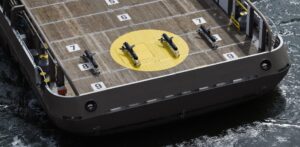
SG-1 Fathom and Lura: next-generation scalable sensor technology
The new system is based on two components. The SG-1 Fathom is an autonomous underwater glider that can be used for up to three months thanks to a lithium-ion battery. With a length of 195 cm, a diameter of 28 cm and a weight of around 60 kg, it is compact, modular and designed for high-volume production. The glider can move through the water column at 1-2 knots or remain on the seabed. Its maximum speed is specified as 4-5 knots. It operates silently and is difficult to detect. SG-1 Fathom is suitable for both single and swarm operations.
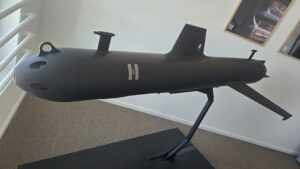
The onboard AI Lura processes acoustic signatures directly in the glider (Edge AI). The software processes acoustic signals in real time directly in the sensor carrier - regardless of critical bandwidths on transmission paths and external analyses. As the signals can be analysed almost loss-free, it detects signals that are ten times quieter than comparable systems and classifies sound sources up to 40 times faster than human operators. The analysis is based on a Large Acoustic Model (LAM), which is based on decades of acoustic training data and is continuously updated with new threat parameters. Lura should not only be able to distinguish between individual ships, but also recognise even subtle pattern deviations and learn with every deployment.
A single operator can control dozens to hundreds of gliders simultaneously. This creates a networked sensor system that can be expanded as required - a kind of "underwater satellite constellation". The system is produced in Helsing's own resilience factories with partners such as QinetiQ, Ocean Infinity and Blue Ocean Marine Tech Systems.
A look around the world: Who is developing similar glider systems?eme?
Similar or related concepts are being pursued internationally. Australia for example, is working with Anduril Industries on the Ghost Shark project - an XL-AUV for deep-sea operations with a long range and modularity, but without the option of on-board analysis or networking in a swarm. It is expected to be operational by 2025.
The civil IMOS network in Australia is already using gliders for long-term oceanographic measurements - with valuable conclusions about energy requirements and long-term availability. The Wave Glider from Liquid Robotics is established as a hybrid platform - powered by wave energy and capable of operating both on the surface and underwater.
In the USA platforms such as the Liberdade class are in use, while Liquid Robotics offers a hybrid surface/underwater system with the Wave Glider. Also in Europe relevant developments are underway, such as the SeaExplorer, a glider capable of operating at depths of up to 5,000 metres, and the EU project GROOM (Gliders for Research, Ocean Observation and Management), which aims to create the basis for a European glider infrastructure. China In turn, the Sea Soar series pursues various concepts for coastal surveillance and deep-sea operations. Other countries are also pursuing similar or related concepts.
International developments show that autonomous underwater platforms are gaining in strategic importance. The differences lie primarily in payload, depth, swarm capability and AI utilisation.
Distributed Acoustic Sensing (DAS): the fibre optic listening post
Distributed Acoustic Sensing (DAS) takes a completely different approach. Here, existing fibre optic cables on the seabed are used as linear acoustic sensors. By analysing the backscattering of coherent light pulses on the cables (known as Rayleigh scattering), vibrations and noises along the cables can be located. At UDT 2025 (Underwater Defense Technology, held in Rostock at the end of March), Dr Bernd Drapp from Böblingen-based AP Sensing presented the results of a field study in which a DAS system was able to successfully detect and visually display acoustic signals from various types of ships at a distance of 10 kilometres. It is particularly worth emphasising that both the temporal and spatial distribution of the noise sources could be precisely mapped.
DAS can therefore transform conventional fibre optic cables into kilometre-long microphone arrays, turning existing infrastructure into sensors. One drawback: it is directly linked to existing cables and cannot perform any classifying analyses for the time being. This is where Lura could be usefully integrated as an AI evaluation system - even independently of the SG-1 glider. The combination of DAS detection and Lura analysis provides a hybrid early warning system - quiet, continuous and virtually immune to detection.
Autonomous sensor technology under water: the somewhat different approach of Anduril and Ultra
Anduril Industries and Ultra Maritime are pursuing a different approach to monitoring maritime spaces with a permanent presence without traditional platforms. In April 2025, they entered into a partnership to develop a distributed, AI-supported underwater sensor system. The centrepiece is the combination of Sea Spear sonar arrays, the Dive XL autonomous carrier and the modular Seabed Sentry, which is deployed on the seabed. The systems are designed to autonomously monitor large sea areas and detect submarines in real time - cost-efficient, scalable and quickly deployable. The first comprehensive tests are planned for 2025.
Conclusion: Networking instead of either/or
With SG-1 and Lura, Helsing delivers an expandable, autonomous sensor system with high responsiveness and detection accuracy. The integration of artificial intelligence at glider level opens up new tactical options - especially in marginal seas such as the Baltic Sea or the South China Sea.
DAS systems as stationary sensor networks, on the other hand, can develop efficiency where infrastructure already exists and passive, continuous monitoring is required. The technology concepts of Anduril/Ultra and Helsing should not be seen as competitors, but rather as complementary elements of modern underwater situational awareness.
Europe would do well to examine the parallel expansion of these approaches. In future, it will be crucial to utilise AI architectures such as Lura as data-processing nodes of a sensor-based underwater network. The maritime domain of the 21st century will not only be characterised by floating or submerged platforms and their sensors - but increasingly by algorithms and networked intelligence. Helsing has provided a template with its launch on two coasts.
hum
